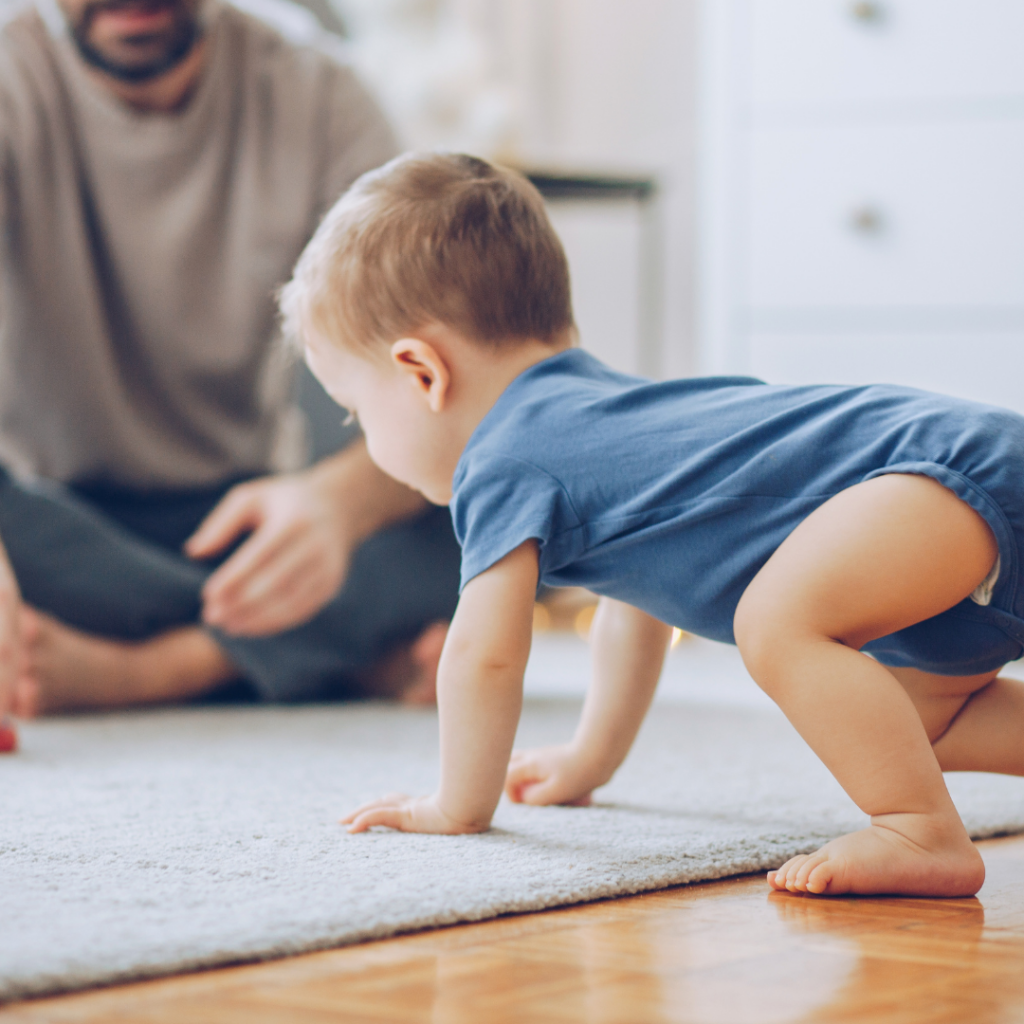The moment your baby starts crawling is an exciting milestone, but it also marks a time of increased vigilance for parents. As your little one begins to explore their surroundings, it’s crucial to create a safe environment that minimises potential hazards. By taking a few proactive steps, you can ensure your home is a secure and nurturing space for your curious crawler. Let’s dive into some practical tips to baby-proof your home and promote worry-free exploration.

- Get down to their level: To effectively identify potential hazards, it’s essential to see the world from your baby’s perspective. Get down on your hands and knees to observe any potential dangers that may be within reach. This simple action will help you spot sharp edges, cords, small objects, or anything else that could pose a risk to your little one.
- Secure heavy furniture and electronics: Unstable furniture, such as bookcases or TVs, can be dangerous if a curious baby decides to pull on them. Anchor heavy furniture and electronics to the wall using brackets or straps to prevent tipping accidents. Make sure cords and wires are safely tucked away or covered to avoid any potential tripping or choking hazards.
- Create designated play areas: Designate specific areas in your home as safe play zones for your crawling baby. Use playpens, baby gates, or portable fences to limit access to potentially hazardous areas such as staircases, kitchens, or rooms with fragile objects. These boundaries provide a secure space for your child to explore and minimize potential accidents
- Cover electrical outlets: Babies are naturally curious and love to explore by touching and sticking objects into tiny holes. Shield electrical outlets with outlet covers or plug protectors to prevent accidental electric shock. Inspect cords and replace any frayed or damaged ones to avoid electrical hazards.
- Lock away dangerous substances: Ensure that all cleaning products, medications, and other toxic substances are stored out of your baby’s reach. Install childproof locks on cabinets where such items are kept. Be cautious about leaving everyday items like cosmetics, batteries, or small objects lying around, as they can be hazardous if swallowed.
- Soften sharp edges and corners: As your baby starts to navigate their surroundings, it’s essential to minimize the risk of injuries from sharp edges or corners of furniture. Use corner guards or edge bumpers to cushion these potentially dangerous areas. This precaution will provide a soft buffer in case of any collisions or falls.
- Cover stairs and install safety gates: Staircases can be a significant hazard for crawling babies. Install safety gates at both the top and bottom of the stairs to restrict access. Ensure the gates are securely attached and feature a latch that is out of reach for your little explorer. Additionally, consider installing a slip-resistant runner or adding non-slip adhesive strips to prevent accidents on slippery surfaces.
The joy of watching your baby take their first steps towards independence can be matched with the peace of mind that comes from knowing your home is a safe and secure environment for their exploration. By being proactive and taking the necessary precautions, you can create a protective haven where your baby can crawl and explore freely. Remember, it’s an ongoing process, so keep adapting and adjusting as your little one grows to ensure their safety throughout their development journey.
Copyright © 2024 Teva Pharma Australia Pty Ltd

